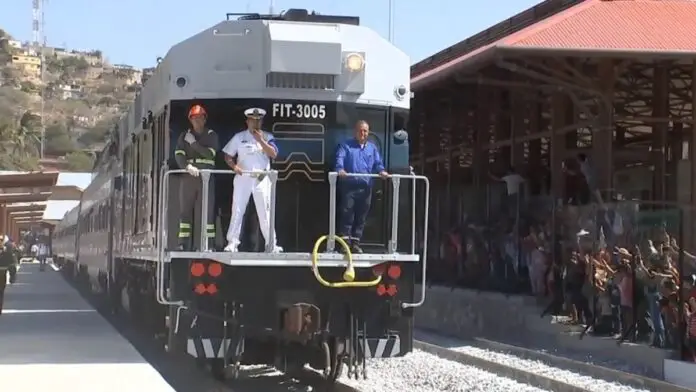In 2020, 1,122,637 homes were registered in the state, of which 53.2% were in a situation of backwardness, according to data from the SNIIV
President Andrés Manuel López Obrador inaugurated the Z Line of the passenger service of the Interoceanic Train of the Isthmus of Tehuantepec, which connects the Pacific and Atlantic oceans through 308 kilometers of railway tracks.
This is the first stage of a project that seeks to establish ten development poles to attract investment in industries, by integrating the port services of Salina Cruz, Oaxaca; Coatzacoalcos, Veracruz; Puerto Chiapas, Chiapas and Dos Bocas, Tabasco, which will be interconnected by 1,200 kilometers of railway tracks and the national road system.
The Interoceanic Train has been classified as one of the most important projects of the six-year term, for its potential for economic growth in one of the most lagging regions of the country in various areas, such as housing.
According to data from the National System of Information and Housing Indicators (SNIIV), until 2020, 1,122,637 homes were registered in Oaxaca, of which 53.2% were in a situation of backwardness, that is, built with materials in deterioration or with precariousness in spaces.
In this sense, the Secretariat of Agrarian, Territorial and Urban Development (Sedatu) reported that the current administration has invested more than 4,000 million pesos in 12,090 housing actions and 96 urban development works in the Interoceanic Corridor of the Isthmus of Tehuantepec (CIIT).
“The works carried out were built with the people involved, without excluding anyone, through dialogue with the peoples and communities to incorporate their vision of development and guarantee the benefits of the project,” said the undersecretary of Territorial and Agrarian Planning, Edna Vega Rangel.
So far, the Interoceanic Train project has not yet reflected a detonating effect on the formal development of housing; according to data from the Unique Housing Registry (RUV), between January and November 2023, in Oaxaca there was a production of 212 houses, while in 2022 197 were built.
In this regard, Jesús Sandoval Armenta, general director of the housing developer Ruba, stated that, although the firm’s strategy is to bet on expansion towards markets with industrial activity, for the moment, the company discards the option of venturing into the regions driven by the federal government, beyond Veracruz.
“Yes, we are going to be in Veracruz that, now with the new port, we all hope that it could have a greater dynamism, but it is not as fast as we would like. There we got in, but we are not going to found more places,” added the businessman.
It is worth mentioning that the housing company announced, in December 2022, an investment close to 2,450 million pesos to build 5,801 houses in the municipality of Veracruz, an area in which it has a growth strategy for the next six years.
Relocation and regulation in communities
The Interoceanic Train project of the Isthmus required the relocation of communities with houses settled in the right of way. In this regard, Vega Rangel assured that the agrarian conflict in the ejido Estación Mogoñé, in the municipality of Matías Romero, was solved.
Likewise, the National Institute of Sustainable Soil (Insus) has delivered 2,762 deeds to give families legal certainty about their heritage and the Sedatu has updated 41 development plans and built 26 community works.
Recently, the undersecretary, in coordination with authorities of state and municipal agencies, participated in the delivery of 55 homes located in Oaxaca and Chiapas, as part of the development of the CIIT.
Source: El Economista







